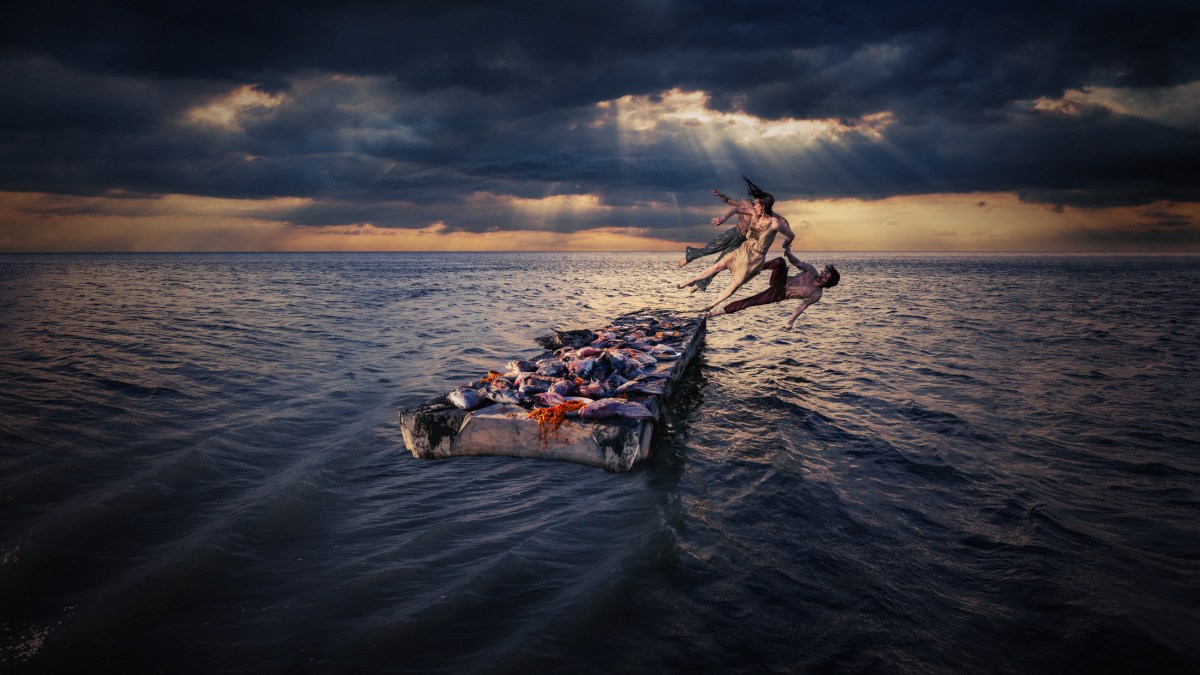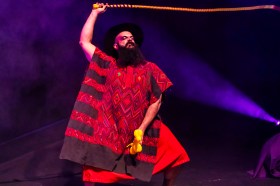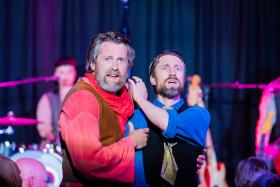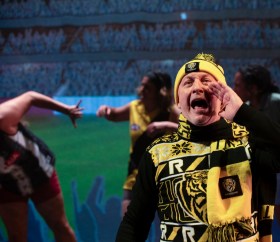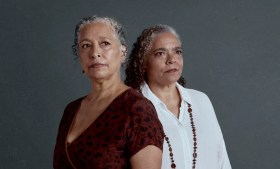Salamander is an extraordinary theatrical work encompassing diverse art forms, sculpture and design, theatre and narrative, music and song, and is performed as a work of contemporary dance. It is the brainchild of well-respected international artists, choreographer and director, Maxine Doyle, and Es Devlin, a contemporary sculptural designer. They conceived the production, which has been incubating for over three years, and co-created it in Brisbane with a team of local creatives, including eight dancers from the Australasian Dance Collective.
‘Soon it would be too hot’ is the opening line of The Drowned World, JG Ballard’s climate fiction novel written in 1962, one of the major influences in creating this work. Prophetically, Ballard predicted that by 2145 the world’s sea levels and surface temperatures would have transformed the planet into an uninhabitable swampland. Doyle has taken this theme, alongside that of the 2021 satirical film, Don’t Look Up, with its last supper-styled dinner party ending, as central to her work.
The show is staged as a site-specific work in a huge warehouse, with the audience invited to be part of the action when first entering the venue. Led in small groups through a series of narrow, winding and darkly lit passages, accompanied by a soundscape of eerie futuristic music, they arrive in a huge cavernous space.
Audience members stand on two levels of a three-sided square for Act One. In front is Devlin’s brilliantly conceived architectural installation – a clear, brightly-lit Perspex cube with multiple levels, passages and rooms. A dark reflective space looms below, which we later realise is a watery moat or swamp surrounding the sculptural design. It is a magical and bold sculptural creation.
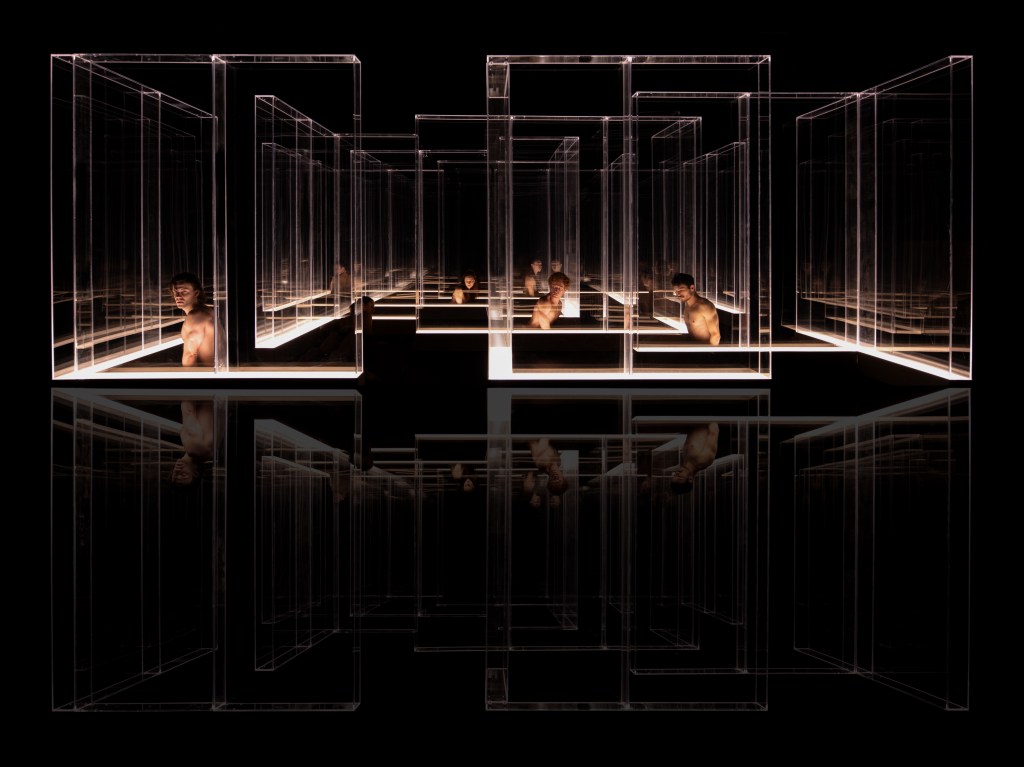
From this cube, scantily clad bodies emerge from and then disappear back into the dark space of the ground, in various degrees of distress and urgency, their bodies pulsating rhythmically. This arresting stage picture is accompanied by a mechanical and jarring sound design from composer, Rachael Dease, powerfully reflecting the work.
Narration is used to convey that the humans are confined to this space, with toxins dangerously high outside.
Dancers who escape into the water begin to morph into amphibians; frogmen traverse the watery depths, as well as brightly coloured swim-suited humans. The dancers display impressive physical attributes of frogs or lizards.
Meanwhile in this fragmented dystopian world, the remaining dancers in the cube enter into a frenzied revelry, ignoring pleas for help from outside as the green-frocked salamander appears. Flashing lights and the screams of the remaining humans trigger Act Two, opening up the venue to another world beyond the Perspex cube. Subsequently, the audience is led to semi-circular seating surrounding a dais on which is set a four-metre long brilliant-red table – another engaging design from Devlin.
The humans attempt to rescue remnants of life from the earth surrounding the dais, while beginning a desperate bid for survival. Clothed in red, the dancers enact a ritualistic frenzy that includes spinning the table on its axis and using it as both a lifeline and a bid for freedom. While weaving around and under the table, they also cling frantically to each other in moves that are both poetic and sensual.
As rain starts to pour on them, Verdi’s immortal ‘Dies Irae’ from his Requiem is played, perhaps denoting an apocalyptic ending as well as renewal and survival. Modelled on Don’t Look Up, the final dinner scene is ably assisted by Margi Ash Brown’s exquisite recorded narration of Joy Harjo’s poem, Perhaps The World Ends Here. With the stage in darkness save for a single light on the surviving green salamander, the original cube is lit brim full of flora, a moving and poignant ending.
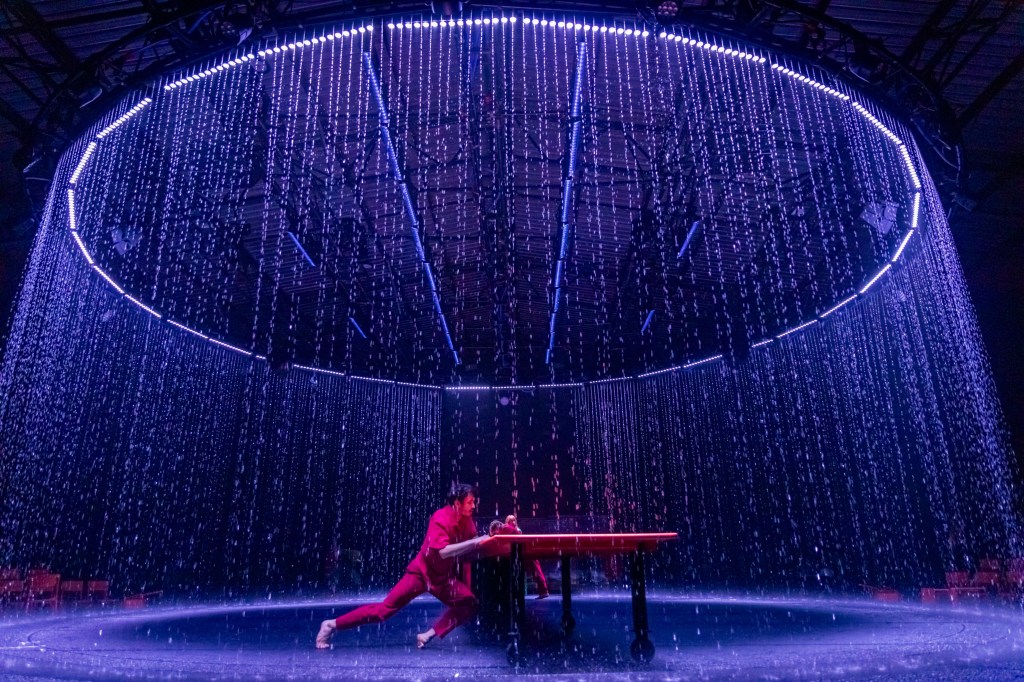
The workload for the dancers in this production is huge and Doyle’s choreography stretches them to their physical limits, yet is brilliantly crafted and executed. Each dancer has a clear personal journey and a total commitment to the work. They are exemplary, their physicality well defined and passionate, their delivery of the work individually and collectively astonishing to watch.
The lighting design by Ben Hughes is thoughtfully executed throughout from the brightly coloured Perspex cube with its cleverly lit floor, through the sombre atmospherics of the swamp. The red wash accompanying the ceaseless rain in Act Two creates a wonderful stage picture, as does his final chilling illumination of the cube.
Bruce McKinven’s costumes, with the pale colours of the humans in the cube and the changes from yellow to green for the amphibious characters, are well-realised. The variety of red outfits for the dancers in Act Two contrasts beautifully with the amphibious green of singer Rachael Dease’s exquisite dress.
Dance is a marvellous medium for contemporary works that can speak to us of global issues. Recently, Townsville’s Dance North staged RED, a work that looked to the air we breathe and the future of the planet. Now Doyle and Devlin offer a similar theme with the insistent rain and flooding water in the last act reminding us of what the human race has to lose. This is a work that everyone should see, as much for its brilliant design and high-quality production values, as for the sobering messages it imparts.
READ: Dance review: RED, Queensland Performing Arts Centre
There is much current discussion about a major cultural program to support the Olympics in 2032. Salamander is one work that shows the maturity of our current artistic thinking and what is possible when we think creatively outside the box. All credit to Artistic Director, Louise Bezzina, and the Brisbane Festival team for creating such a challenging and thought-provoking work that bodes well for the future.
Salamander is presented by Brisbane Festival and Northshore
Director and Choreographer: Maxine Doyle
Stage Sculpture: Es Devlin
Composer, Sound Designer and Vocalist: Rachael Dease
Costume Designer: Bruce McKinven
Lighting Designer: Ben Hughes
ADC Artistic Director: Amy Hollingsworth
Dancers: Gabrielle Nankivell, Chase Clegg-Robinson, Harrison Elliott, Jack Lister, Jag Popham, Lilly King, May Greenberg and Paul Zivkovich
Tickets: $74-$89
Salamander will be performed until 24 September 2023.
